All Types of Succulents 🌵✨
Whether you’re a seasoned collector or just starting your succulent journey, you’ll find everything you need to learn, grow, and care for these incredible plants right here.
Succulents are a diverse group of hardy plants, beloved for their unique forms, vibrant colors, and ability to thrive in tough conditions.
Popular Succulent Families
Click on any of the succulent categories to explore care tips, fun facts, and ideas for showcasing these amazing plants in your home or garden.
Aeonium
Known for their vibrant rosettes that resemble delicate flowers, Aeoniums come in shades of green, purple, and even black.
Perfect for adding a pop of color to your garden.
- Origin: Native to the Canary Islands, Aeoniums thrive in mild, Mediterranean climates.
- Growth Habit: They form rosettes of fleshy leaves atop woody stems, creating a tree-like appearance.
- Dormancy: Unlike many succulents, Aeoniums are dormant in summer and grow actively during winter.
There’s ~35 varieties of aeonium plants according to the University of Wisconsin-Madison.
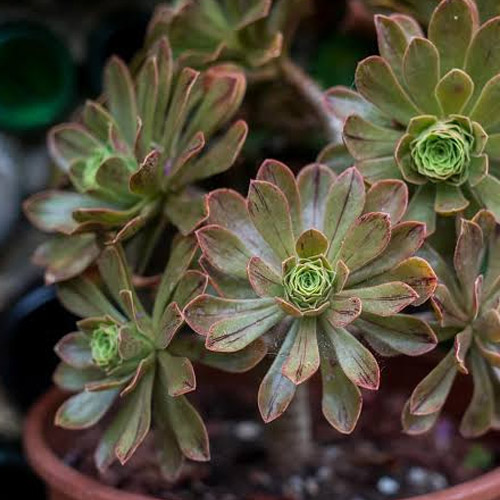
📷 Aeonium Holospathulatum potted succulent by Corseside Nursery Pembrokeshire
Agave
Sturdy and striking, Agaves are the bold architects of any succulent arrangement.
These sharp-edged beauties are low-maintenance and bring a desert vibe to your space.
- Lifespan: Often termed Century Plants, many Agave species take several years to decades to flower, after which they die.
- Uses: Beyond ornamental appeal, Agave sap is used to produce sweeteners and tequila.
- Care Tip: Agaves prefer full sun and well-draining soil; overwatering can lead to root rot.
According to World Checklist of Selected Plant Families, there’s ~270 varieties of agave plants.
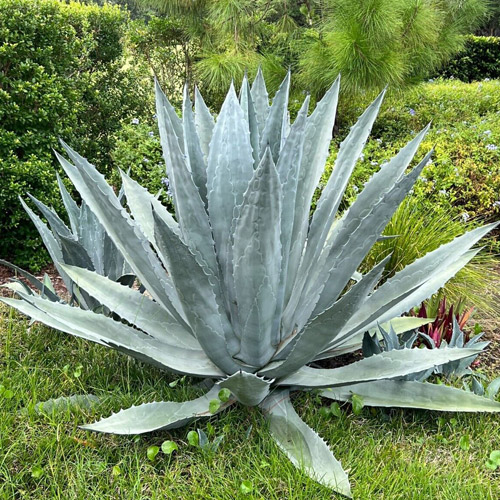
📷 AGAVE Americana by Rancho Tissue
Aloe
Aloe is more than just a medicinal plant—it’s a stunning addition to any collection.
With their spiky leaves and healing properties, they’re as practical as they are beautiful.
- Medicinal Properties: Aloe vera gel is renowned for its skin-soothing and healing properties.
- Appearance: Aloes typically have thick, fleshy leaves arranged in rosettes, often with serrated edges.
- Growth: They can range from small, potted plants to large, tree-like species.
There’s ~590 varieties of aloe plants according to Plants of the World Online.
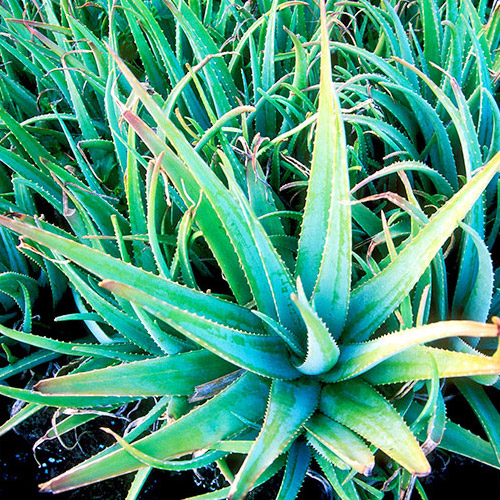
📷 Aloe Vera by Steven Foster
Colorful Succulents
Looking to brighten your space?
From pastel pinks to deep purples, this category is full of succulents that are vibrant, cheerful, and absolutely show-stopping.
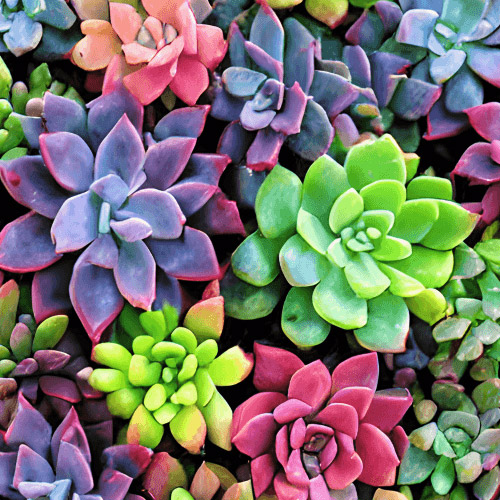
📷 Rainbow Succulents by Creative Fabrica
Euphorbia
These quirky succulents often look like cacti but come with their own unique flair.
Euphorbias are fascinating and easy to care for, making them a favorite for indoor and outdoor gardens.
There’s over 5,000 different kinds of euphorbias plants according to good ole’ Wikipedia.
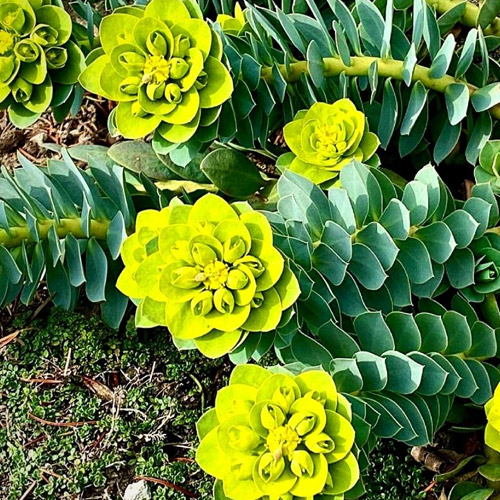
📷 Donkey tail spurge with green-yellow leaves by @fussygardener
Haworthia
Compact and charming, Haworthias are perfect for beginners and small spaces. Their intricate patterns and textures make them miniature masterpieces.
Haworthia is a very large genus within the Asphodelaceae family, containing over 100 species that are native to southern Africa.
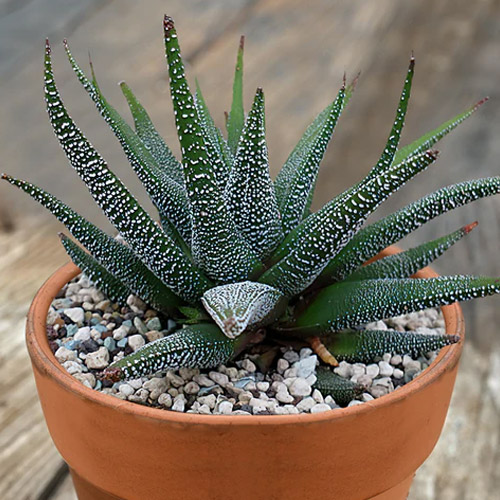
📷 Haworthia succulent potted plant by Aledo Main Street
Kalanchoe
Kalanchoes are known for their eye-catching blooms and thick, water-storing leaves.
A great choice for those who want a touch of floral elegance with minimal care.
- Flowering: Known for vibrant blooms, Kalanchoes often flower in winter, adding indoor color.
- Propagation: Many species produce plantlets along leaf edges, which can be easily propagated.
- Care Tip: They thrive in bright, indirect light and require well-draining soil to prevent root rot.
There’s about ~125 different varieties of kalanchoe plants known according to Wikipedia.
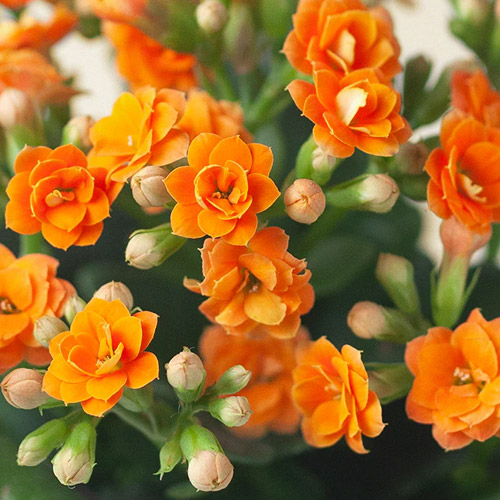
📷 orange Kalanchoe succulent by Lula’s Garden
Mammillaria
Also known as pincushion cacti, Mammillarias are spiny yet adorable, often forming clusters with tiny flowers that bloom like little crowns.
- Diversity: With over 200 species, Mammillaria is one of the largest genera in the cactus family.
- Form: Commonly known as pincushion cacti, they often have cylindrical or globular shapes.
- Flowers: They produce small, colorful flowers that form a ring around the top of the cactus.
There’s 200+ varieties of mammillaria plants known.
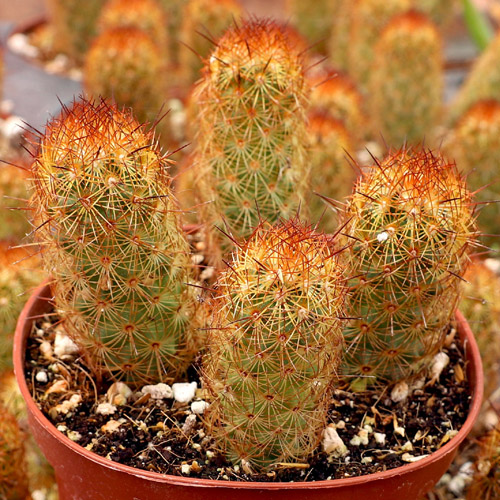
📷 Mammillaria elongata aka Copper-King by Mountain Crest Gardens
Mini Succulents
Small but mighty, these pint-sized plants are perfect for desktops, terrariums, or tiny pots.
They’re ideal for adding green goodness to compact spaces.
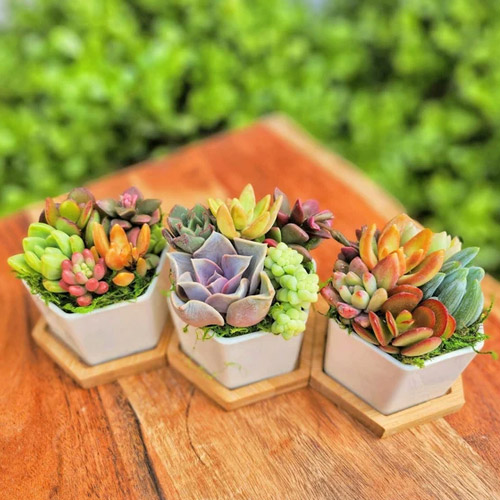
📷 mini succulent garden arrangements by MySucculentCorner
Opuntia
With their flat, paddle-like segments and quirky shapes, Opuntias are a fun and iconic addition to any succulent garden.
- Common Name: Often referred to as Prickly Pear, Opuntias have flat, paddle-like segments.
- Edible Parts: Both the pads (nopales) and fruits (tunas) are edible and used in various cuisines.
- Spines: They have two types of spines: large, fixed spines and small, hair-like glochids that can irritate the skin.
There is over 150 varieties of opuntia plants according to the USDA Forest Service.
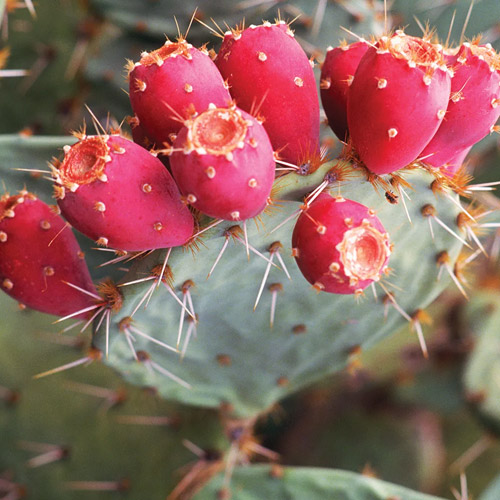
📷 Opuntia succulent with red by Encyclopedia Britannica
Sedum
Sedums come in endless varieties, from creeping ground covers to upright forms.
They’re tough, versatile, and thrive in almost any condition.
- Variety: Sedums, or stonecrops, range from low-growing ground covers to upright varieties.
- Hardiness: Many Sedum species are cold-hardy and can survive in harsh climates.
- Flowers: They produce star-shaped flowers, often attracting pollinators like bees and butterflies.
There is ~460 varieties of sedum plants according to Wikipedia.
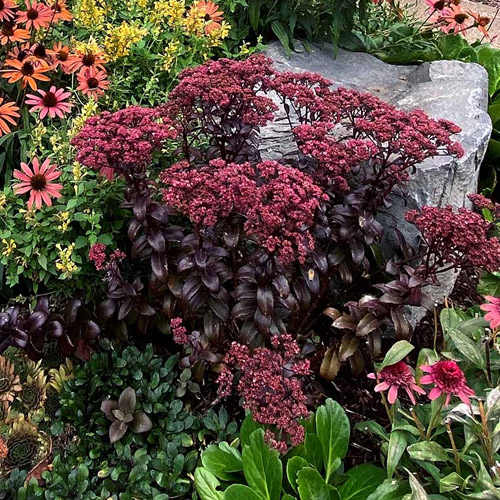
📷 sedum dark magic by terra nova nurseries
Senecio
Senecios bring creativity to your garden with their trailing stems and unusual shapes, like the popular String of Pearls and String of Bananas.
- Unique Species: Includes varieties like String of Pearls (Senecio rowleyanus) known for bead-like leaves.
- Growth Habit: Many are trailing or creeping, making them ideal for hanging baskets.
- Toxicity: Some Senecio species can be toxic if ingested, so keep them away from pets and children.
There’s roughly 1,500 species of senecio plants known per Plants of the World Online.
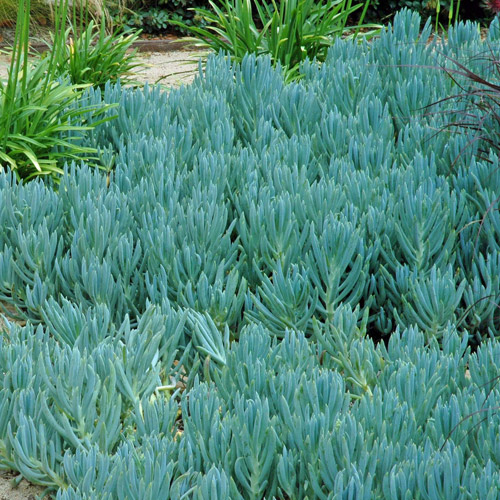
📷 Senecio mandraliscae by PlantMaster
Next update will include:
- Crassula
- Echeveria
- Gasteria
- Sempervivum
5 common questions people ask about succulents and their types
With simplified answers to help you grow and care for them.
How often should I water my succulents?
Succulents prefer the “soak and dry” method: water thoroughly, then let the soil dry out completely before watering again. This typically means watering once every 1-2 weeks, depending on your climate and season.
What’s the best soil for succulents?
Succulents need well-draining soil to prevent root rot. A cactus or succulent mix works best, or you can mix regular potting soil with sand, perlite, or pumice.
Can succulents survive indoors?
Yes! Many succulents, like Haworthia, Echeveria, and Aloe, thrive indoors with bright, indirect sunlight. Be cautious of overwatering in low-light conditions.
Why are my succulents stretching or turning leggy?
This happens when succulents don’t get enough light. Known as etiolation, the plant stretches toward the light source. Move your succulent to a brighter spot to prevent further stretching.
Do succulents flower?
Yes! Many succulents, like Kalanchoe, Mammillaria, and Sedum, produce beautiful flowers. However, flowering depends on the plant’s maturity, light conditions, and overall care.
